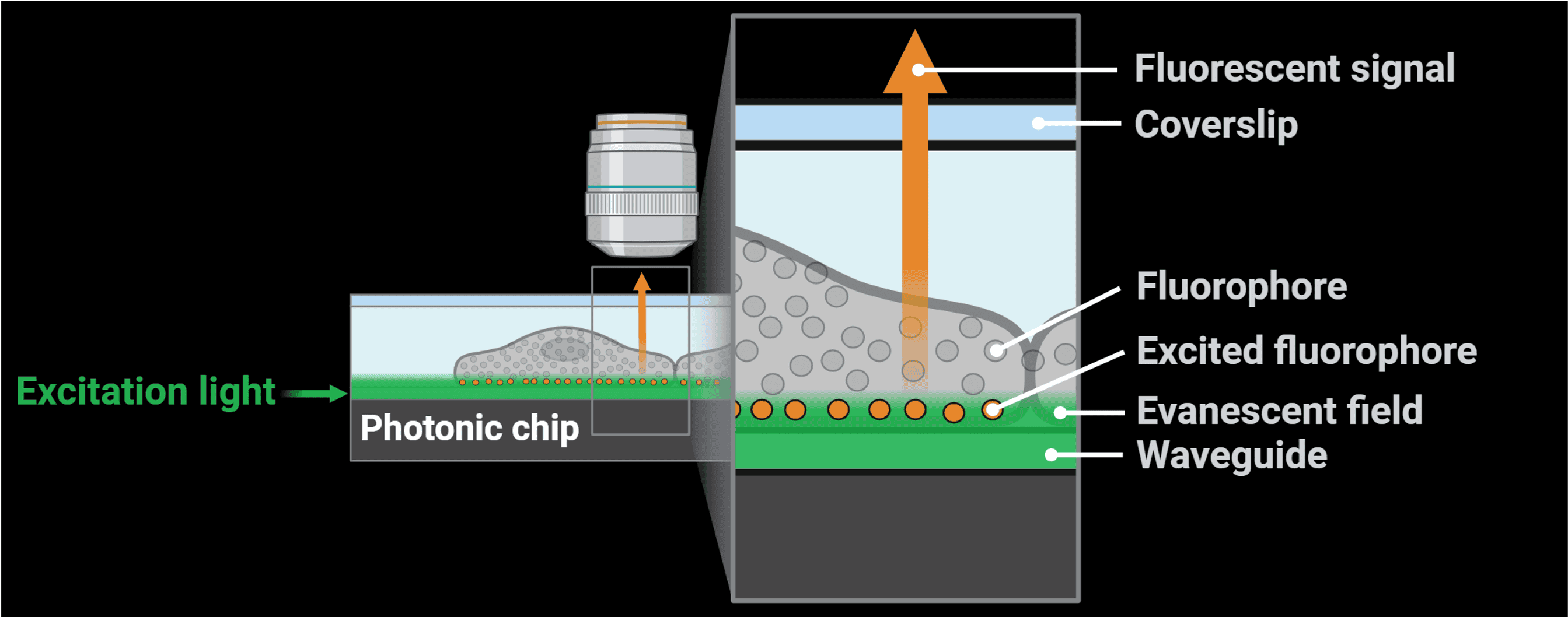What is Chip-Based TIRF?
Leveraging mature CMOS technology, the photonic chips contain an in-built layer of minute optical fibers denoted as “waveguides”. Upon automated laser light coupling onto these waveguides, the excitation light reaches the sample in a precisely controlled manner on the chip surface via the phenomenon of total internal reflection. The evanescent field provided by the waveguides allows for ultrathin optical sectioning of around 100 nm, thus reducing the background signal and enhancing the SNR in fluorescence imaging.
Advantages over conventional TIRF microscopy
Contrary to conventional objective-based total internal reflection fluorescence (TIRF) microscopy approaches, where the same objective is used for illumination and signal collection, our chip-based TIRF technology decouples the excitation and collection light paths, making it possible to illuminate the sample uniformly over large fields of view while enabling crispy TIRF images at all levels of magnification!

Multimode Waveguide Technology Ensures Artifact-Free Images
By using our multimode waveguide technology, we can ensure a uniform illumination over the entire field-of-view. In ACP ZERO, the sample is illuminated from thousands of different angles within each exposure of the camera. This ensures that our images are free from shadow artifacts.
